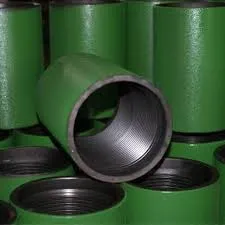- Afrikaans
- Albanian
- Amharic
- Arabic
- Armenian
- Azerbaijani
- Basque
- Belarusian
- Bengali
- Bosnian
- Bulgarian
- Catalan
- Cebuano
- Corsican
- Croatian
- Czech
- Danish
- Dutch
- English
- Esperanto
- Estonian
- Finnish
- French
- Frisian
- Galician
- Georgian
- German
- Greek
- Gujarati
- Haitian Creole
- hausa
- hawaiian
- Hebrew
- Hindi
- Miao
- Hungarian
- Icelandic
- igbo
- Indonesian
- irish
- Italian
- Japanese
- Javanese
- Kannada
- kazakh
- Khmer
- Rwandese
- Korean
- Kurdish
- Kyrgyz
- Lao
- Latin
- Latvian
- Lithuanian
- Luxembourgish
- Macedonian
- Malgashi
- Malay
- Malayalam
- Maltese
- Maori
- Marathi
- Mongolian
- Myanmar
- Nepali
- Norwegian
- Norwegian
- Occitan
- Pashto
- Persian
- Polish
- Portuguese
- Punjabi
- Romanian
- Russian
- Samoan
- Scottish Gaelic
- Serbian
- Sesotho
- Shona
- Sindhi
- Sinhala
- Slovak
- Slovenian
- Somali
- Spanish
- Sundanese
- Swahili
- Swedish
- Tagalog
- Tajik
- Tamil
- Tatar
- Telugu
- Thai
- Turkish
- Turkmen
- Ukrainian
- Urdu
- Uighur
- Uzbek
- Vietnamese
- Welsh
- Bantu
- Yiddish
- Yoruba
- Zulu
bull plug oil and gas
The Role of Bull Plug in Oil and Gas Operations
In the dynamic and demanding field of oil and gas extraction, efficiency and reliability are paramount. A crucial component that plays a significant role in enhancing the operational safety and efficiency of drilling activities is the bull plug. This article explores the significance, functionality, and various applications of bull plugs in the oil and gas industry.
What is a Bull Plug?
A bull plug is a type of heavy-duty plug used predominantly in the oil and gas sector. It is designed to seal off various openings within pipelines, pressure vessels, and equipment that are not in use while drilling or during pressure testing. Bull plugs are typically constructed from high-grade materials such as carbon steel or stainless steel, allowing them to withstand the extreme pressures and corrosive environments often encountered in oil and gas operations.
Importance of Bull Plugs in Oil and Gas
1. Safety The oil and gas industry is fraught with hazards, including explosive gases and high-pressure conditions. A failure in any equipment can lead to catastrophic accidents. Bull plugs are essential in maintaining the integrity of containment systems, ensuring that hazardous substances do not escape. By securely sealing unused ports and valves, bull plugs help in preventing leaks that could potentially threaten both the safety of personnel and the environment.
2. Operational Efficiency By providing a robust sealing solution, bull plugs ensure that pressure tests can be conducted effectively. This is crucial during various operational phases, such as drilling, well completion, and maintenance. Proper sealing contributes to faster and more efficient testing procedures, thereby reducing downtime and enhancing overall operational efficiency.
3. Versatility Bull plugs are designed to be adaptable to different systems and conditions. They come in various sizes and pressure ratings, making them suitable for a wide array of applications across the oil and gas sector. From upstream drilling operations to downstream refinery processes, bull plugs serve as critical components that can be customized to meet specific operational requirements.
bull plug oil and gas

Applications of Bull Plugs
Bull plugs find numerous applications throughout the oil and gas lifecycle
- Drilling Operations During drilling, bull plugs are used to seal off unused connections in drilling rigs and pipelines. This prevents the influx of unwanted fluids and pressures from surrounding formations, ensuring the safety and stability of the drilling operation.
- Pressure Testing Before any operation can commence, it's vital to ensure that the systems involved can withstand the pressures they'll encounter. Bull plugs are employed to seal off sections of pipelines or vessels during pressure testing, allowing operators to monitor integrity without risking leaks.
- Well Maintenance In the long lifecycle of a well, periodic maintenance is necessary. Bull plugs are instrumental in isolating sections of the wellbore while maintenance work is carried out, enabling operators to address issues without affecting the overall production capabilities.
Conclusion
The bull plug may seem like a simple component, but its impact on the oil and gas industry is significant. By ensuring safety, enhancing operational efficiency, and providing versatility across various applications, bull plugs serve as a vital asset in maintaining the integrity of oil and gas operations. As the industry continues to evolve, the importance of reliable components like bull plugs cannot be overstated. Their role is essential not just for immediate operations but also for the long-term sustainability and safety of oil and gas projects. As technological advancements continue to shape the industry, enhancing the capabilities and functionalities of essential components like bull plugs will remain a priority for operators aiming to achieve operational excellence.
-
Tubing Pup Joints: Essential Components for Oil and Gas OperationsNewsJul.10,2025
-
Pup Joints: Essential Components for Reliable Drilling OperationsNewsJul.10,2025
-
Pipe Couplings: Connecting Your World EfficientlyNewsJul.10,2025
-
Mastering Oilfield Operations with Quality Tubing and CasingNewsJul.10,2025
-
High-Quality Casing Couplings for Every NeedNewsJul.10,2025
-
Boost Your Drilling Efficiency with Premium Crossover Tools & Seating NipplesNewsJul.10,2025







